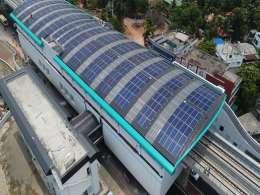India’s continued reliance on coal for power generation in the foreseeable future is by now an established imperative. This does not preclude a strong push for renewables, energy efficiency, demand-side management and other interventions to reduce emission intensity in line with India’s commitments at the Paris Climate Agreement. However, growth in energy requirements is likely to be large. India will have to build new coal-fired plants even after all the alternate resource plans come to fruition, while retiring old and inefficient coal-fired plants, particularly those located in areas where pollution is a critical issue. Standards on emissions have been tightened to a point where it would not make any practical sense to invest in several of those old plants to bring them in line with contemporary environmental standards.
A comprehensive fleet assessment is merited since important choices would have to be made on several dimensions. How efficient should the new fleet be? Should all new machines going forward be ultra supercritical, or would less ambitious supercritical machines be adequate? What kind of design flexibility should be built in to ensure rapid ramping for managing grid variability? Where should these plants be located? Would technology characteristics and specifications vary by location? Should they be air-cooled in light of the water stress that the country faces increasingly? What kind of coal should they be built for? When should the migration to integrated gasification combined cycle (IGCC) happen at scale? Should IGCC be accompanied by carbon capture and storage?
The questions go beyond coal-based generation technologies and other evolutionary developments need to be taken into consideration. For example, if battery storage becomes less expensive and can be deployed on a large scale, design of the future coal-fired plants could stand altered compared with a scenario when battery storage is not cost effective, and coal-fired plants are used to manage grid variability. There would be cost/tariff implications and regulators would need to align tariff regimes to such technological evolutions. Planning, design and regulation would also need to consider other contingent factors including demand growth rates, transmission topology, market design, products in competitive markets, fuel economics, reliability and security standards, financing and a host of other such aspects.
The entire web of choices needs to be integrated through a design framework that is responsive to the demands of this complex optimality. Below are seven suggested steps to evolve a framework for planning, more broadly initially, and eventually drilling down to the specific questions around clean coal technologies.
Define the principal goals and objectives: The principal intent should be carefully laid out in clear, unambiguous terms. This process is important. Too many ‘principal goals’ can lead to infeasible or non-intuitive solutions just like too few of them could result in an unresponsive outcome. For example, if environment and cost can both be goals in this process, leaving out one of them can result in undesirable or impractical outcomes. However, if a large number of other goals (say, geographic dispersion, local technology development, local manufacturing, among others) are added to this, then the solutions could turn out to be equally unresponsive or impractical.
Define the non-negotiable terms: These would not be variables, but absolute red lines that should not be breached in design. Note that these by themselves are not goals. For example, network security is not a service goal, but may be a non-negotiable.
Identify and understand underlying technologies, and define the variables: This article has already touched upon many of those including technology, location, fuel, cycling capability and corresponding costs. These are typically resource-specific and become a part of overall decision variables in the optimality determination process. In the context of clean coal assessment, many of these variables would be related to clean coal technologies. However, to the extent that other resource technology developments materially affect the trajectory of clean coal, those resources need to be equally factored in.
Develop analytical framework and underlying models: The complex choices would require advanced modelling and analytics. There would be choices to be made here as well. For example, fundamental models, statistical models, and input/output-based computable general equilibrium models could be put to use. Often these tools and models would need to be run in parallel and used in unison.
Socialize outputs and findings: The vast array of possibilities need to be collated, interpreted and connected. This is a complex and demanding process and thus requires the best minds to congregate on the outputs and findings to derive usable conclusions. There would certainly be alternate interpretations and varying emphasis, but the process needs to point towards clear directions.
Put forth a clear roadmap: The directional clarity alluded to above should finally lead to usable guidance, both qualitative and quantitative. There would necessarily be alternate pathways to goals. The choices made among those possible pathways and the basis for those choices should be embedded into the roadmap.
Identify the imperatives for clean coal technology development and deployment basis the roadmap: Having drawn the high level roadmap, actions should then drill down to the core theme of clean coal. The range of individual technologies would need to be mapped in a staged process to identify technology development and deployment needs, the regulatory/market roadmap for the same, fuel imperatives, location factors, price support needs at stages where technologies are still young, and other practical considerations. Application research in specific technological areas and the need for pilots for them (if necessary) would have to be identified.
Over time, several debates are now getting settled. As commented at the outset, it is now reasonably settled that exclusion of conventional fuels in deference to renewables would be an inappropriate choice for India. It is also equally settled now that coal itself has to become substantially cleaner if the scale of deployment required is to be practically achieved while adhering to environmental commitments. These conclusions need to be mapped back into specific all-round actions on clean coal and other related technologies. Application research in these areas to identify and implement the roadmap would be merited.
Anish De is partner-infrastructure, government and healthcare, KPMG in India.
Like this Column? Sign up for our daily newsletter to get our best reports.





